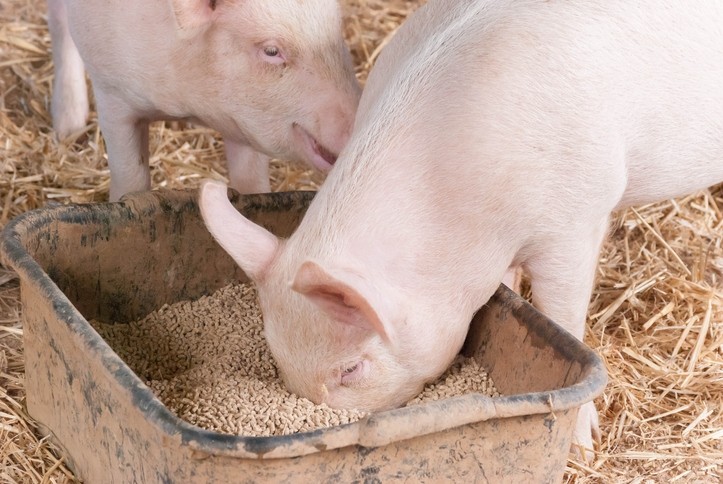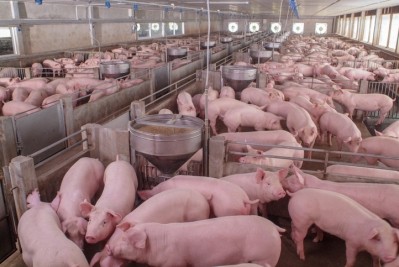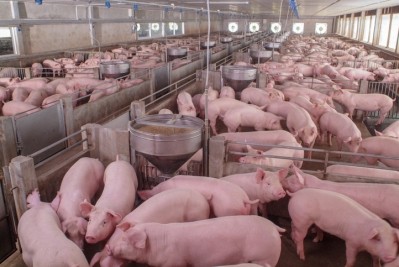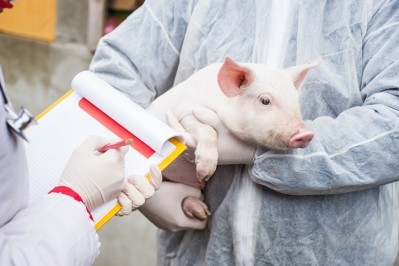ASF outbreak in Asia raises questions about swine feed biosecurity

We caught up with Jon De Jong, president of Pipestone Grow Finish during One: the Alltech Idea’s conference in Lexington, Ky. to hear more about the swine feed research the company is doing.
The Minnesota-headquartered company operates in four areas: animal health, nutrition, management and services, said Gordan Spronk, veterinarian and board chairman with Pipestone Veterinary Services during a combined presentation on biosecurity.
The company manages 250,000 sows in the US and has become increasingly aware of the need for biosecurity practices in the industry, he said during his talk. It also has been working with swine production facilities in China.
“African Swine Fever is one of the most severe viruses that can affect our pig farmers because of the high mortality rate,” Spronk said. “We quickly concluded that much like PEDV here in the US, that in China, with feed, there is potential risk of transmission of the virus, because of this cultural behavior of how feed is handled.”
Tracking viruses in feed and biosecurity needs
In addition to physical biosecurity at a swine facility, there is a growing focus on the need to address feed as part of a biosecurity plant, Spronk said during the presentation. That understanding initially developed following an outbreak of the porcine epidemic diarrhea virus (PEDV) in the US.
“As field veterinarians, [we] could observe that the virus was moving around differently than we normally had it move around,” Spronk said regarding why the company started looked at feed as a potential vector for PEDV transmission. “We concluded quickly that feed, based on our observations, based on our data, was reasonable for moving this virus to our farms.”
Feed had not been considered previously, in part, because PEDV had not been in the US prior to 2013 and it was assumed that the transmission routes of other diseases were known, said De Jong. With PEDV, there were some early cases of the disease that raised questions about feed – including cases on Prince Edward Island in Canada or others when separate farms that all used the same feed mill developed the disease on the same day.
“The poultry guys have known about bacteria transmission in the feed – it’s not something you typically worry about on the swine side, but we didn’t have PEDV,” he told us. “When that happened, there were a lot of things that pointed us to feed delivery … and then we found out that plasma can be contagious when Kansas State University proved you can infect pigs with plasma. This was concerning since so many producers were feeding plasma at the time.”
“No one had thought about it until PEDV put a spotlight on it,” he added.
However, he said, with the outbreak of PEDV waning, the attention being given to feed as a biosecurity risk had been fading prior to the outbreak of ASF in China.
“When African Swine Fever hit in China in August of 2018, feed biosecurity got put back in the spotlight because we import a significant amount of feed ingredients from China – everyone had flashbacks to 2013 when our PEDV strain is 99.000% similar to the Chinese strain,” said De Jong. “We got educated with PEDV, and this could be that times 10 to the industry … so there’s some renewed interest in feed biosecurity, and feed research, and I think this will make it stick.”
Recent research into ASF has shown that it could be possible for the disease to survive a simulated version of the import process, and feeding trials completed at Kansas State University found that feed contaminated with ASF could make swine sick, he said.
Addressing feed biosecurity means producers need to consider making decisions about where to source ingredients, he said. If they are buying feed ingredients from countries where ASF is present then it could be important to verify the manufacturer, have a trusted import process and quarantine the ingredients.
“If we do it the right way and trust the science … the risk can be managed,” he said. “Feed ingredients are just one piece of the puzzle – you also have people traffic, you have food – so it can’t stop with the feed.”
In the future, there could be additional implications from the possibility that feed can carry disease including how feed mills are built, De Jong said. “There’s going to be a lot of change in the next 20 years in feed mill design and construction, not only from an efficiency standpoint but also, from a biosecurity standpoint,” he added.
“We build these assets, and no one ever thought about biosecurity, so they have one driveway and no way to segregate people,” he said. “Feed will become a new cornerstone of biosecurity.”
APC and Alltech
In addition to working with swine producers, Pipestone had been doing some research with a feed acidifier, which appears to also reduce the amount of some viruses present in feed, said De Jong.
Alltech recently acquired the APC technology from Cornerstone, he said. Cornerstone is a joint venture between Pipestone and AniTek.
The company developed the feed additive during the last three to four years before it was acquired by Alltech, he said.
The product grew out of an interest in mitigating the presence of viruses in feed, he said. It followed initial research by Scott Dee, director of research with Pipestone Applied Research, identifying that some viruses, including PEDV and ASF, could survive a simulated import process in several feed ingredients.
“We started to work on how can we prevent that or mitigate the effect of virus in feed and, at that point, started to develop the product,” he added.
The additive acts as a feed acidifier, De Jong said. However, it is demonstrating some ability as a second response to mitigate viruses in feed.
Thus far, the additive has been tested with both PEDV and the porcine reproductive and respiratory syndrome virus (PRRS), he said. In trials where pigs faced a disease challenge, those that also received amounts of the feed supplement remained negative for the disease.
At this point, the feed additive has not been tested with feed contaminated with ASF, he said. “We have plans to collaborate with Alltech moving forward specifically with the APC product and other future research initiatives in regard to that product,” he added.
Currently, the product is working through the regulatory process, added Alltech.















